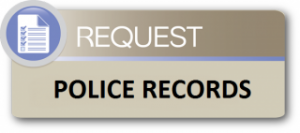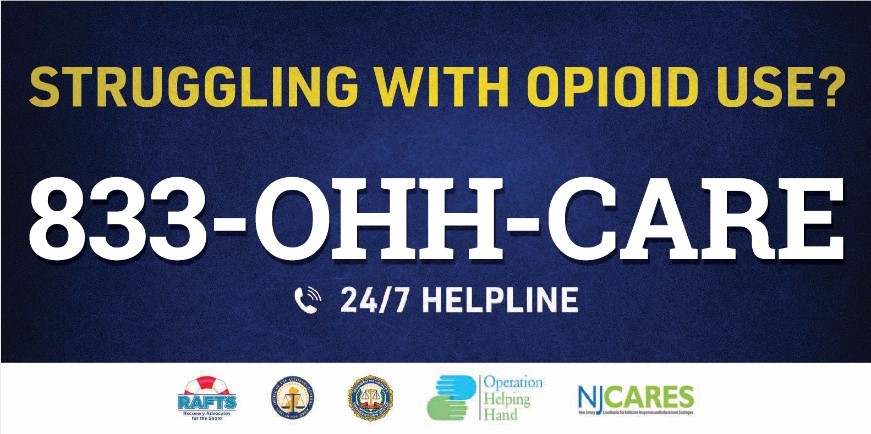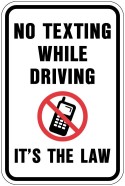Frequently Asked Questions about the changes to New Jersey’s Graduated Driver License (GDL) Law that will take effect on May 1, 2010.
1. My daughter obtained her provisional (restricted) license on January 2, 2010, is she effected by these changes to the GDL law? Won’t she be grandfathered in under the old law?
There is no grandfathering. All teens holding a permit or provisional (restricted) license must comply with the changes that take effective on May 1, 2010.
2. My son currently has a provisional license and will be eligible for his basic license right after he turns 18 this fall. With the changes taking effect on May 1, will he need a decal and be subject to the restrictions until he’s 21 years of age?
No, these requirements and restrictions only apply to your son while he is holding a provisional (restricted) license. Under the GDL law, a teen driver must hold a provisional license (following completion of the permit phase) for a minimum of 12 months. Once he completes those 12 months of provisional licensure, he should visit the nearest Motor Vehicle Commission agency to obtain a basic, unrestricted license. If your son fails to obtain a basic license and is stopped by a police officer, he is subject to the requirements and restrictions of the GDL law.
3. Are all drivers under 21 years of age required to display the decal and adhere to the restrictions of the GDL law?
No, only those teens under 21 who are holding either a permit or provisional (restricted) license are required to display the decal and abide by the GDL restrictions. It is important to note that under New Jersey’s GDL law, teens are required to complete a minimum 12 month provisional (to be called probationary) licensing period. Depending upon the age they begin that period, teens may obtain a basic, non-restricted license as young as age 18 years of age. Once they obtain a basic license, all restrictions and requirements under the GDL system are lifted.
4. What’s the penalty for failing to display the decal?
The penalty is a $100 fine (no penalty points), the same penalty for all other GDL violations.
5. Why are teens being singled out? Why aren’t senior drivers being asked to place a decal on their vehicles? They’re some of the most dangerous drivers on the road.
Teens (16-20 years of age), more than any other age group on New Jersey’s roadways, are over-represented in motor vehicle crashes. Car crashes are the number one killer of teens in New Jersey and throughout the nation. States and other countries have adopted Graduated Driver License laws to help teen drivers gradually gain driving experience over a period of time, while minimizing those elements (i.e.,passengers, cell phones/texting, driving at night, failing to wear seat belts) that cause them the greatest risk. New Jersey’s GDL law went into effect in 2001 and despite the safety gains that have been made in protecting teens and all motorists on the road, more than 400 teen drivers and teen passengers (driven by teens) were killed in motor vehicle crashes between 2001 and 2009. The requirements and restrictions that will take effect on May 1, are designed to address aspects of the GDL law that must be improved if the state is to stem the tide of teen driver crashes that are claiming young lives. As for senior drivers, crash data shows that they are some of the safest and most experienced drivers on New Jersey’s roadways. They often self- regulate by staying off the road during rush hour and at night, and are far more physically active than previous generations. The problem is that when a senior driver crashes, they’re more likely to be seriously injured or killed.
6. What happens if someone steals my teen’s decal? If my teen is stopped by a law enforcement officer, will s/he still be responsible?
Your teen is responsible for ensuring that his decals are displayed on the front and rear license plate of the vehicle he is operating. Having an extra set of decals on hand in case of theft or loss will help to alleviate this concern. Your teen may also remove the decals and store them in a safe place (such as the glove compartment) when he’s not driving. If your teen elects to leave his decals on the vehicle when not driving, remind him to check the vehicle’s license plates before taking to the road. In addition to the license plate check, teaching your new driver to check his vehicle regularly for potential hazards such as low tire pressure will ensure that he doesn’t encounter a problem, such as a flat tire, once on the road.
7. Will the length of the permit change?
No, the new law does not change the length of the permit. Any teen under 21 years of age who obtains a permit must hold that permit for a minimum of 6 months. If a teen obtains a permit at 16 years of age, he must wait until he turns 17 years of age before obtaining a provisional (probationary, restricted) license.
8. I read that the number of passengers my teen driver can transport is limited to one besides their dependants. Does that mean my teen may transport more than one passenger if they are immediate family members such as siblings?
No, dependants refer to the teen driver’s children, not siblings. The Legislature recognized that there may be provisional (probationary) license holders under 21 who are also parents and made this exception. A teen holding a provisional license may transport only one passenger. If the teen’s parent or guardian is in the vehicle, however, the passenger restriction does not apply and the teen may transport as many passengers as there are seat belts. .
9. I’m worried this decal will make my teen the target of predators when she’s on the road at night or at the mall.
Requiring teen drivers to display an identifier or decal on their vehicles when behind the wheel is not a new concept. Many countries (including England, Australia, Canada, Japan, and Germany, for example) have required the use of an identifier for a number of years without a history of incident. Law enforcement officials point to the Internet, not vehicle decals, as the primary means by which predators target children and teens.
Being able to identify a teen driver is the single most vexing issue for those responsible for administering and enforcing the provisions of the GDL law. The use of a decal will remove the unlawful practice of profiling (assuming someone is a teen holding a GDL because the driver looks young, drives a certain type of vehicle or is leaving a school parking lot) from the equation and ensure that police only stop those vehicles for curfew, cell phone and passenger restriction violations because the vehicle is clearly marked.
10. Won’t the police use this decal to harass teen drivers behind the wheel?
Absolutely not. Law enforcement officials will use the decal to enforce the restrictions of the GDL law which are in place to protect teens, their passengers and everyone else on the road. As noted in the answer to question 9, being able to identify a teen driver is the single most vexing issue for those responsible for administering and enforcing the provisions of the GDL law. The use of a decal will remove the unlawful practice of profiling (assuming someone is a teen holding a GDL because the driver looks young, drives a certain type of vehicle or is leaving a school parking lot) from the equation and ensure that police only stop those vehicles for curfew, cell phone and passenger restriction violations because the vehicle is clearly marked.
11. Once a teen completes the provisional (to be called probationary) license phase of the GDL, what happens next?
At the completion of the provisional (probationary) license phase (a minimum of 12 months), a teen should return to the nearest Motor Vehicle Commission agency to obtain a basic, unrestricted license. Once the teen has obtained a basic license, the decal requirement and restrictions no longer apply. If a teen fails to return to MVC after completing the provisional (probationary) license phase, the GDL restrictions still apply. Teens should note that a basic, unrestricted license looks nearly the same as a provisional (probationary) license, however, it will no longer display the yellow stripe with the wording “provisional” or “probationary” printed across the top or the “Z” restriction on the front (located in the center over the capitol dome) and back. The basic license will also be printed on the vertical axis because the license holder is not yet 21 years of age (that aids in easily identifying someone under the legal drinking age). Upon renewal of the license on or after the teen’s 21st birthday, the license will be printed on the horizontal axis. The cost to convert from a provisional (probationary) license to a basic license is $18.
12. Does the permit or provisional license holder have to be present to purchase the decal?
No, another individual (i.e., a parent, sibling, driving school instructor, etc.) may purchase the decal on behalf of the permit or provisional license holder.















